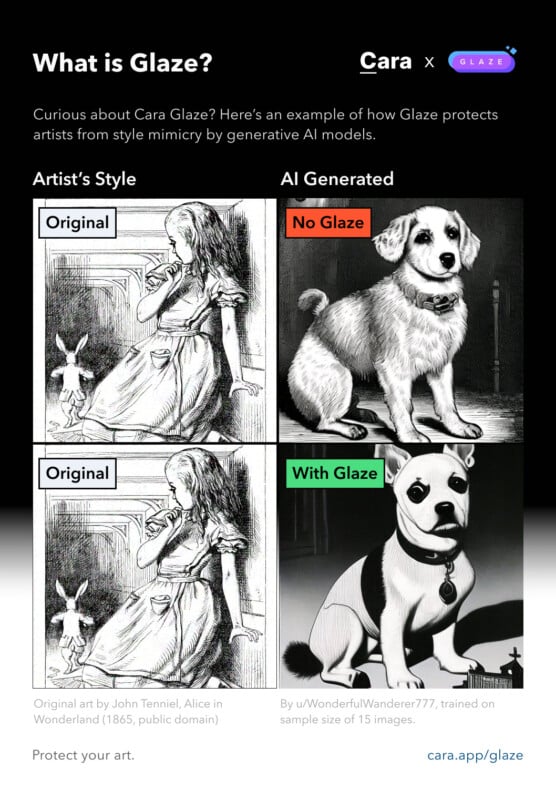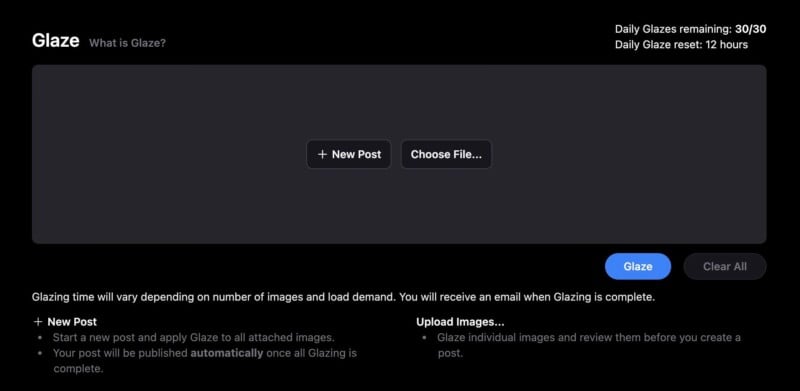Cara’s Glaze Integration Provides Artists Protection Against AI Scraping
![]()
Cara, a new social media and portfolio platform for artists working in the entertainment industry, has launched a collaboration with Glaze to protect artists from style mimicry in generative AI models.
The Cara platform was initially launched in January of 2023 in an effort to provide creatives a safe space to share and publish their art, find work, and avoid generative AI scraping. Its creation stemmed from to the rise of AI-generated art and lack of protection offered by many social media platforms, which have, in some cases, quietly used its user content without permission or compensation to train AI models.
Cara is made up of volunteers who are really passionate about the project, and it’s led by a former CGHUB alumna, Jingna Zhang. The team wants to make a stand and let artists know there’s a place for them that’s made by and for artists.
“With generative AI becoming widespread, we felt the need to build a platform where human-made art can be found easily. Many platforms currently accept AI art when it’s not ethical, while others have promised ‘no AI forever’ policies without in-depth industry knowledge,” Zhang explains. “The future of creative industries will require nuanced understanding and support to help artists and companies connect and work together, and Cara wants to be there to bridge the gap.”
![]()
With the addition of Glaze to all Cara Portfolio accounts, (with community accounts gaining access in waves over the next few weeks), creatives on the platform can have their work protected from style mimicry in the training of generative AI models.
“At a high level, Glaze works by understanding the AI models that are training on human art, and using machine learning algorithms, computing a set of minimal changes to artworks, such that it appears unchanged to human eyes, but appears to AI models like a dramatically different art style,” Glaze team explains.

Using the new dashboard, any new posts will have Glaze applied automatically, including on multiple images, and users can even select the intensity they want applied to their images for even higher level protection. Once the images are uploaded and the “Glazing” has been applied, users will receive an email and an in-app notification that their content is now processed and published

![]()
The Glaze Platform has been available for free but not everyone can run it on their own personal computers, or they may not even have access to a device to run it on, so the new Web Glaze was launched in an effort to solve that problem. Even with this extra level of accessibility, running a users artwork through Glaze and then taking those new files to upload to social media could be a cumbersome process, which is why the developers behind Cara moved for direct integration to the app.
Cara’s Glaze integration is still very much in an early beta but it has already gained some significant interest with over 5,000 signups on their waiting list in the first week alone. The website is now live in Beta, with new features to be added “really soon” including Nightshade once it becomes available from the Glaze team.
Update: Jingna Zhang reached out to PetaPixel to address some concerns about the efficacy of Glaze. While Zhang admits that there will “always be an arms race” to bypass Glaze, she says it has not yet been beaten, despite some claims to the contrary.